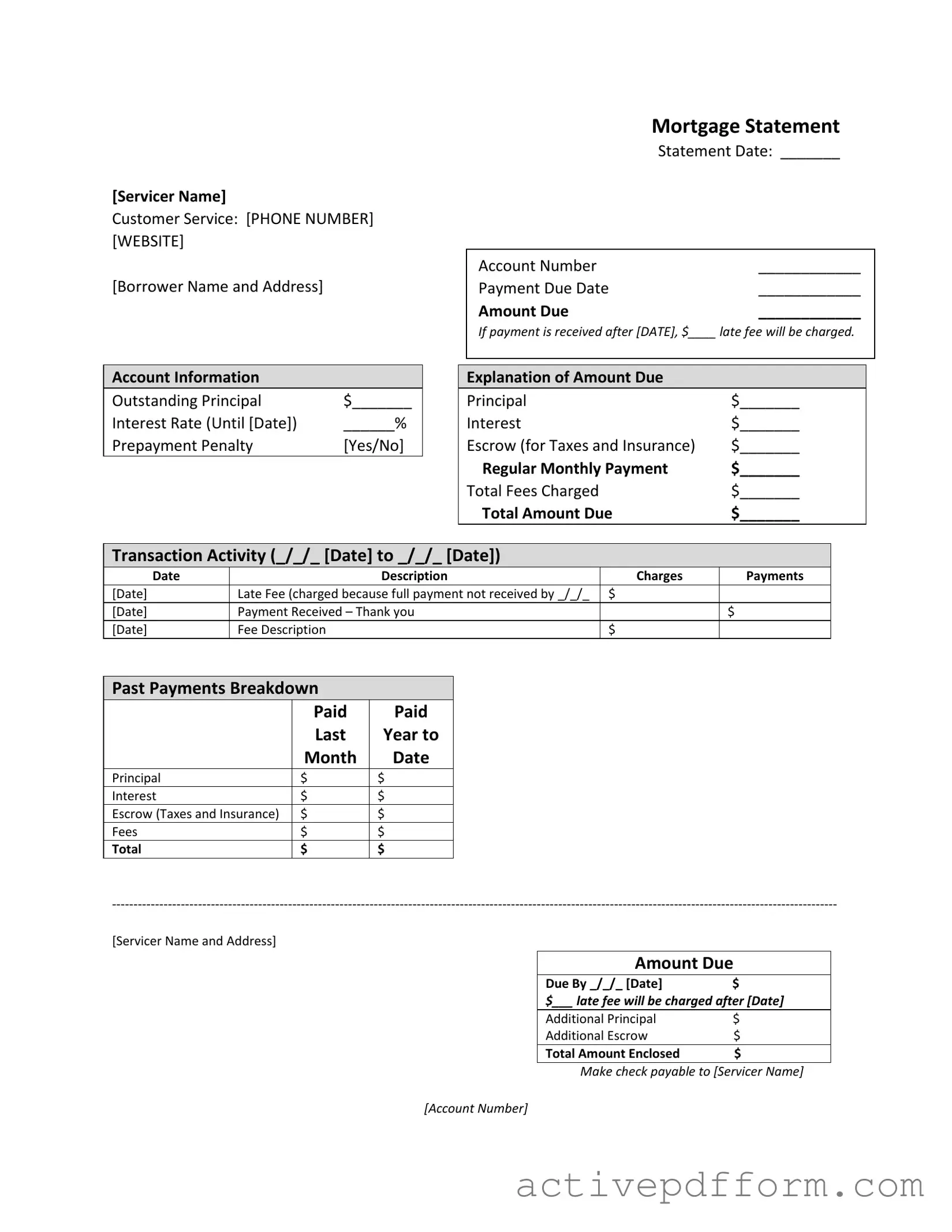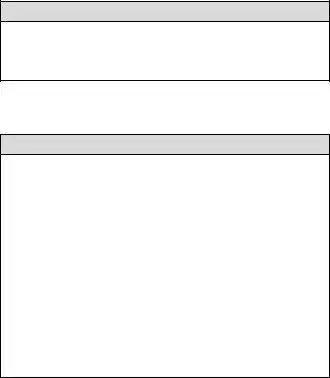What is a Mortgage Statement?
A mortgage statement is a document provided by your mortgage servicer that outlines the details of your mortgage account. It includes important information such as your outstanding balance, payment due date, interest rate, and any fees that may apply. This statement helps you keep track of your mortgage payments and understand your financial obligations.
How often will I receive my Mortgage Statement?
Typically, mortgage statements are sent out monthly. However, some servicers may provide statements quarterly or annually, depending on your loan agreement. It’s important to check with your servicer for their specific schedule and to ensure you’re aware of your payment obligations.
What does the "Amount Due" section mean?
The "Amount Due" section of your mortgage statement indicates the total amount you need to pay by the due date to keep your account in good standing. This amount often includes principal, interest, escrow for taxes and insurance, and any additional fees. Paying this amount on time helps you avoid late fees and potential negative impacts on your credit score.
What are late fees and when are they charged?
Late fees are charges that may be applied if your payment is not received by the due date. Your mortgage statement will specify the amount of the late fee and the date after which it will be charged. To avoid these fees, it’s essential to make your payments on time.
What is the "Transaction Activity" section?
The "Transaction Activity" section provides a detailed history of your recent payments and charges. It includes dates, descriptions of transactions, and amounts charged or paid. This transparency helps you track your payments and understand any changes to your account.
What should I do if I can't make my mortgage payment?
If you're experiencing financial difficulty and cannot make your mortgage payment, it’s crucial to reach out to your mortgage servicer as soon as possible. They may offer options such as loan modification, repayment plans, or mortgage counseling to help you manage your situation and avoid foreclosure.
What is a prepayment penalty?
A prepayment penalty is a fee charged by some lenders if you pay off your mortgage early. Not all mortgages have this fee, so it’s important to check your mortgage statement for details. Understanding whether you have a prepayment penalty can help you make informed decisions about paying off your loan early.
How can I contact my mortgage servicer for questions?
Your mortgage statement includes contact information for your servicer, such as a customer service phone number and website. If you have questions or need assistance, don’t hesitate to reach out to them. They are there to help you understand your mortgage and address any concerns you may have.


